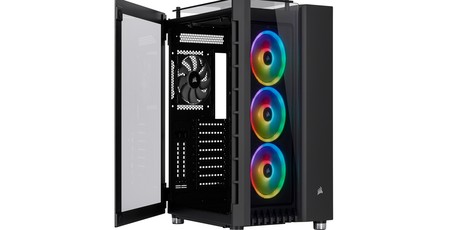
Manufacturer: Corsair
UK price (as reviewed): £219.98 (inc. VAT)
US price (as reviewed): MSRP $249.99 (exc. tax)
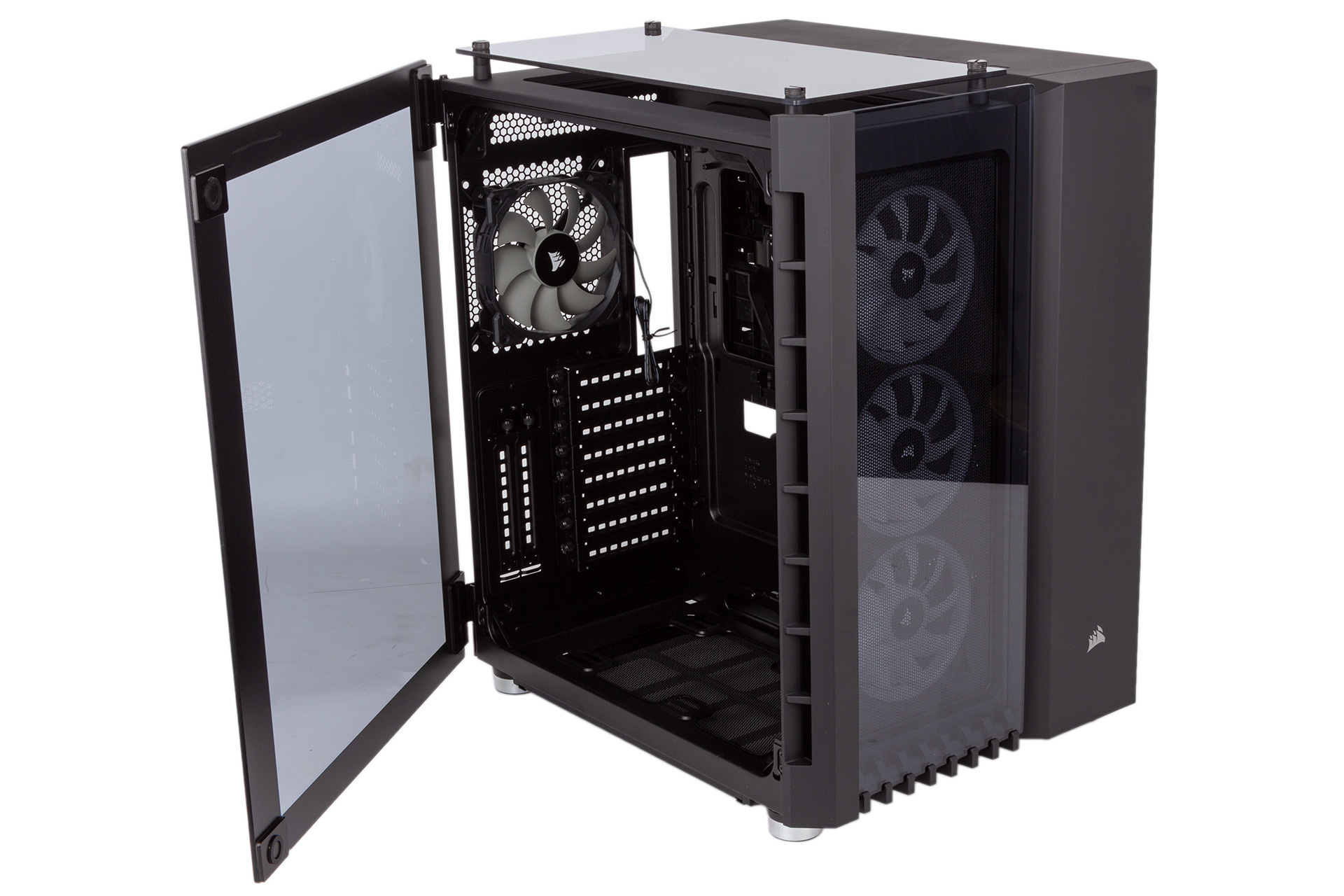
The tempered glass panels cover the roof, front, and side of the main chamber of this dual-chamber chassis, giving you a great view of the core hardware inside. While the thickness and weight of this gives the 680X decent build quality, the use of plastic for the inner parts of both the front and roof panels detracts from it, especially when the £220 price tag is considered. The feet give the case plenty of clearance at least, and rubber on the feet will keep the thing planted.
The three intake fans are complemented by a rear 120mm fan, though this time the model is SP120 rather than another RGB LED model. While the case does support 140mm fans as well, the front can only house two, so Corsair evidently opted to go for more RGB over larger fans, which is in keeping with the Crystal Series, although we’re not sure why it didn’t have the fourth one also be LL120 RGB as well.
The three RGB fans come pre-connected on the inside to the included Lightning Node Pro, which can be used via the iCUE software to control the lighting colours and effects. The chassis does not include any integrated lighting or LED strips of its own.

Airflow is a concern when using tempered glass panels since you can’t drill ventilation holes into them like you can with steel or plastic. To counter this Corsair mounts the panels further away from the steel structure than before, with the roof especially having plenty of clearance. The hinged side panel also sits a small distance away, and there are suitably large ventilation holes cut into the plastic of the front panel. Corsair does supply shorter rubber spacers for the roof as well, so if you prefer a tighter gap up top then this is available.
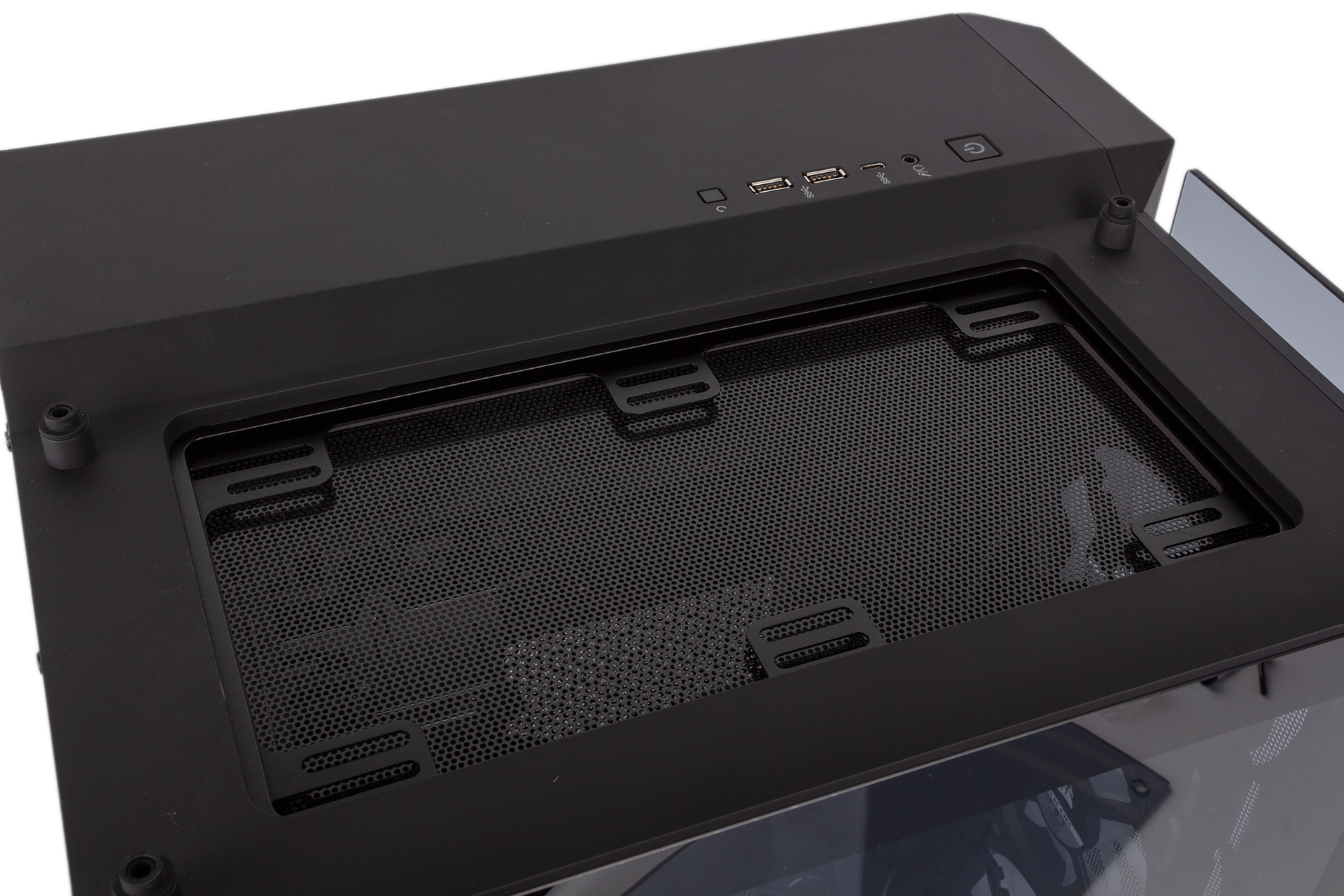
The downside to allowing more air in is the potential for allowing more dust in. As such, a magnetic dust filter is supplied for the roof, and the front panel has one integrated behind the glass as well. You also get a flexible magnetic dust filter on the right side, which is where the PSU draws in air, and this is neatly fitted flush to the case.
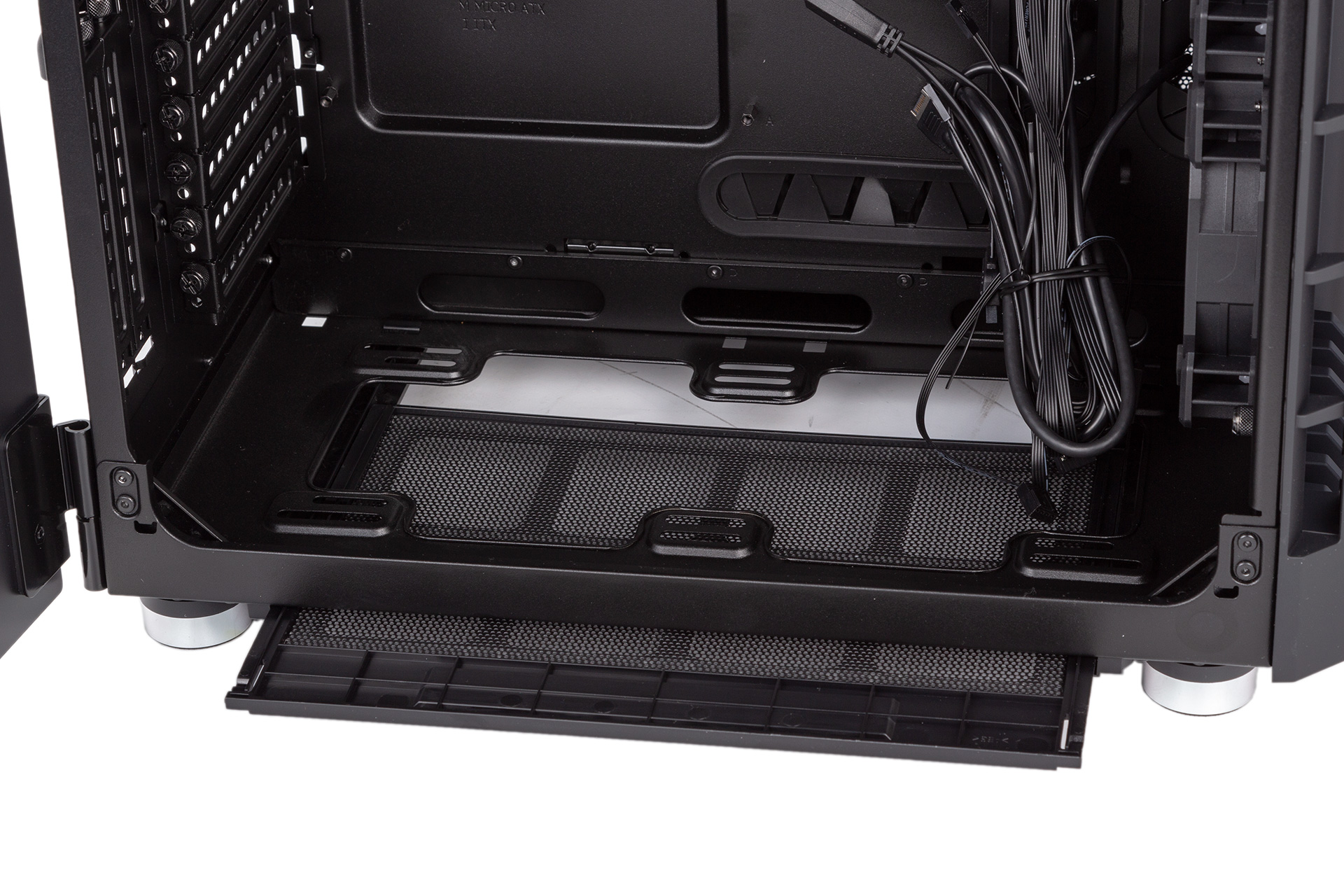
There’s also a bottom dust filter protecting the fan mounts here, and this sensibly pulls out to the side rather than the rear, and reinserting it is easy once you’re done cleaning.
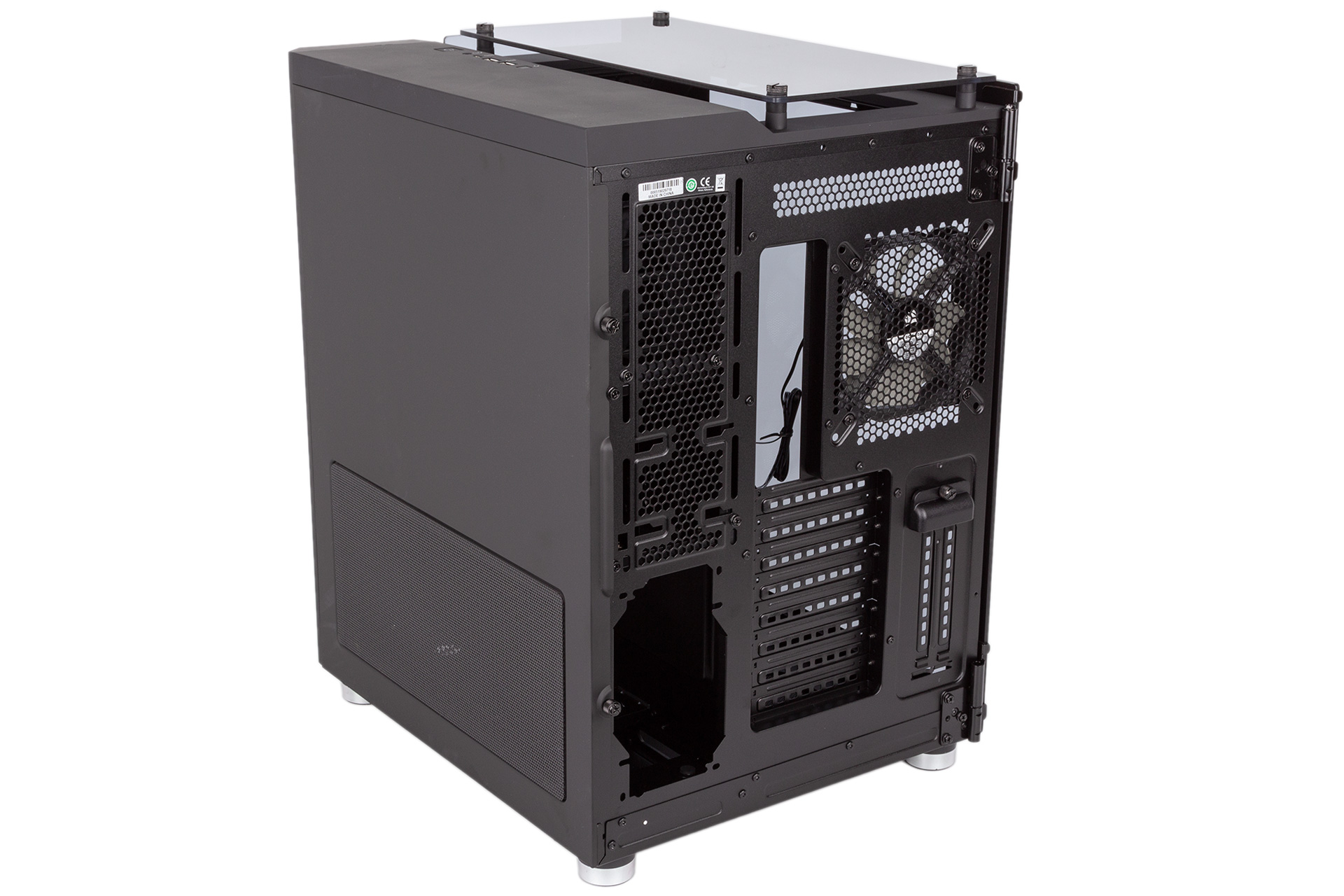
Seen from the rear, the main feature of note are the brackets allowing you to vertically mount your graphics card. There is space for cards that occupy more than two slots, but as we saw with our Ryzen system build video using this case, such cards will ride close to the side panel. You will also need to purchase a PCIe riser cable separately, which is the accepted norm now.
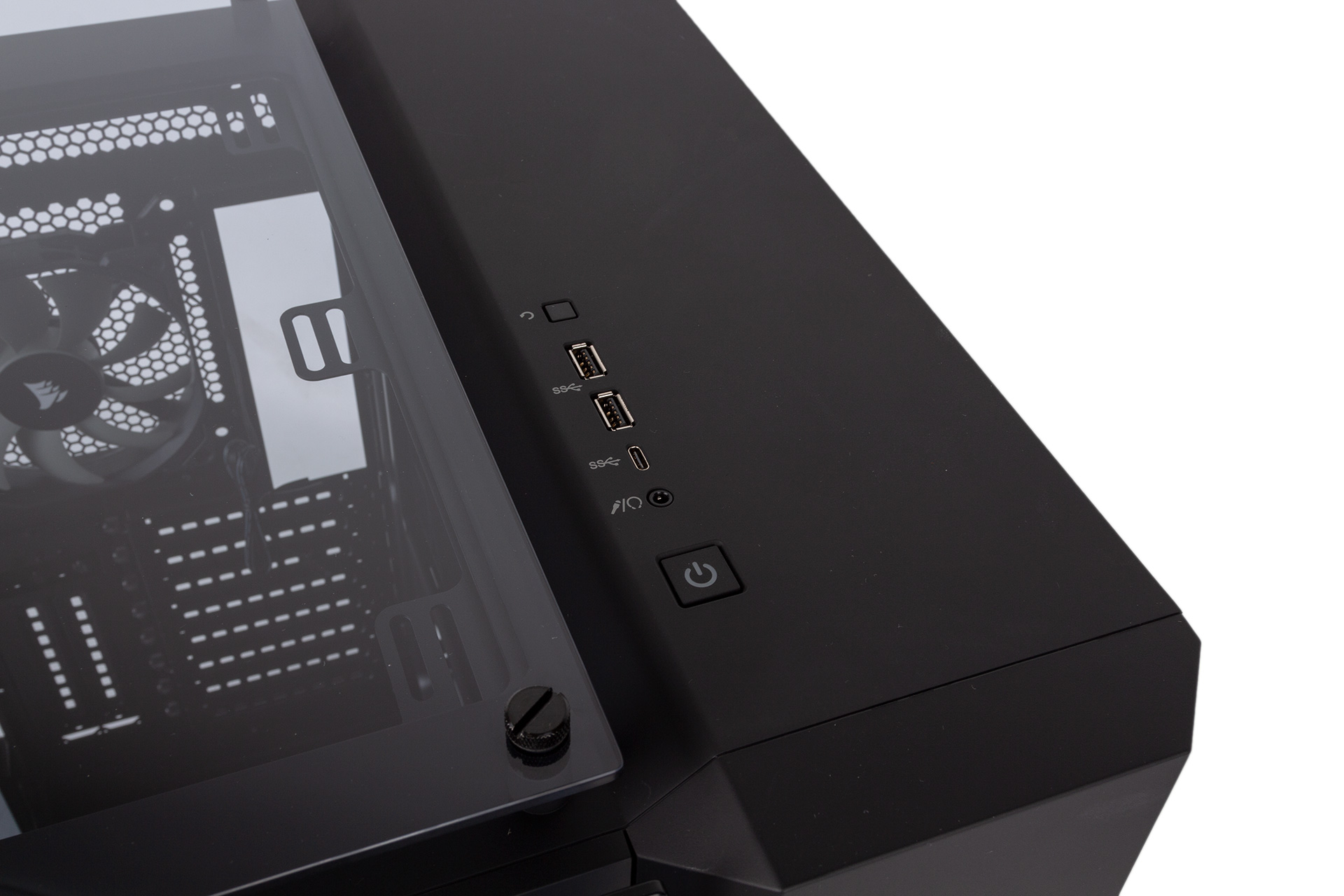
USB 3.1 Gen 2 Type-C is a welcome addition to an otherwise standard front panel that also includes a pair of Type-A USB 3.0 ports, although we like the blacked-out ports. The audio connection is again a mobile-style single jack with both headphone and microphone capabilities, so dual-jack headsets will need an adaptor.
Specifications
- Dimensions (mm) 344 x 423 x 505 (W x D x H)
- Material Steel, plastic, tempered glass
- Available colours Black, white
- Weight 11.6kg
- Front panel Power, reset, 1 x USB 3.1 Type-C, 2 x USB 3.0, 1 x headphone/microphone 3.5mm jack
- Drive bays 4 x 3.5"/2.5", 3 x 2.5"
- Form factor(s) E-ATX, ATX, micro-ATX, mini-ITX
- Cooling 2 x 140mm or 3 x 120mm front fan mounts (3 x LL120 RGB 120mm
fans included), 1 x 140mm/120mm rear fan mount (1 x 120mm fan included), 2 x 140mm/120mm roof fan mounts, 2 x 140mm/120mm bottom fan mounts (fans not included)
- CPU cooler clearance 180mm
- Maximum graphics card length 330mm
- Extras Removable dust filters, Lighting Node Pro RGB LED controller with six-port GB fan hub, shorter roof spacers

MSI MPG Velox 100R Chassis Review
October 14 2021 | 15:04

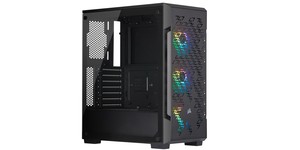
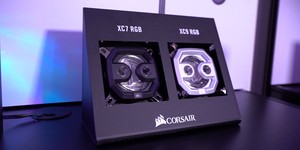
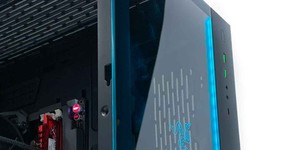




Want to comment? Please log in.